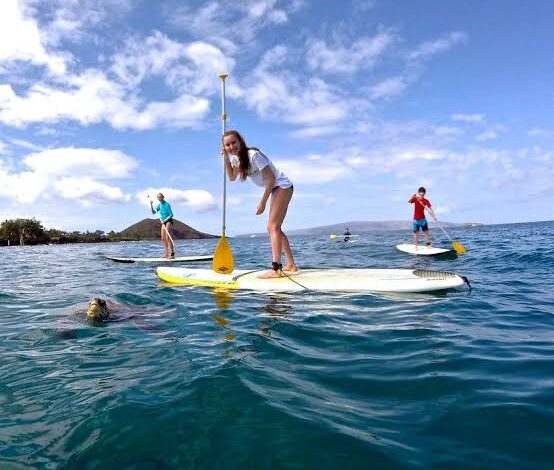Hard Stand-Up Paddle Boards: Your Ultimate Guide

Stand-up paddle boarding (SUP) is a fun way to enjoy the water, and hard stand-up paddle boards offer a durable, high-performance option for paddlers. This guide covers everything you need to know about hard SUPs, including their benefits, types, how to choose one, and tips for beginners. Whether you’re new to paddling or looking to upgrade, this article will help you make informed decisions.
What Are Hard Stand-Up Paddle Boards?
Hard stand up paddle boards, also known as solid SUPs, are rigid boards made from materials like fiberglass, epoxy, or carbon fiber. Unlike inflatable SUPs, they don’t require inflation and provide a sturdy platform for paddling. Hard SUPs are known for their durability, speed, and stability, making them ideal for various activities, from casual paddling to competitive racing.
Benefits of Hard SUPs Over Inflatables
- Durability: Hard boards are built to withstand rough use, making them long-lasting .
- Performance: They offer better glide, speed, and efficiency, perfect for long-distance touring or racing .
- Stability: Their rigid structure provides a more stable feel, especially in waves or choppy water.
- Variety: Hard SUPs come in a wide range of sizes and shapes, allowing for a better fit for different body types and paddling styles .
However, hard SUPs require more storage and transport space compared to inflatables, which can be deflated and stored in a bag.
Types of Hard SUPs
Hard SUPs are designed for specific activities, with each type offering unique features. Here are the main types:
- All-Around Boards: Versatile for flatwater paddling, small waves, or general use. Great for beginners and families.
- Touring Boards: Long and narrow, designed for long-distance paddling with better tracking and efficiency.
- Racing Boards: Sleek and fast, optimized for speed in competitions.
- Surfing Boards: Shorter and more maneuverable, ideal for catching waves.
- Yoga Boards: Wider and more stable, perfect for practicing yoga on the water.
- Fishing Boards: Equipped with features like rod holders and extra stability for fishing.
How to Choose the Right Hard SUP
Choosing the right hard SUP depends on your skill level, body weight, and intended use. Here are the key factors to consider:
- Length: Longer boards (10-14 feet) are faster and more stable but harder to maneuver. Shorter boards (8-10 feet) are more agile but less stable.
- Width: Wider boards (30-34 inches) offer more stability, great for beginners or carrying gear. Narrower boards (28-30 inches) are faster but less stable.
- Thickness: Thicker boards (4.5-6 inches) provide more buoyancy and stability but may be slower. Thinner boards are faster but less forgiving.
- Volume: Higher volume boards (100-200 liters) are more stable and buoyant, ideal for heavier paddlers or beginners.
- Fin Setup: Single fins are great for straight-line tracking, while multiple fins (thruster or quad) offer better maneuverability.
- Weight: Lighter boards (25-30 lbs) are easier to carry but may be more expensive. Heavier boards (30-35 lbs) are more durable but harder to transport.
Tip for Beginners: Start with a wider, thicker board with higher volume for better stability. As you gain experience, you can upgrade to a narrower, longer board for better performance.
Essential Accessories for Hard SUPs
To enjoy your hard SUP safely and comfortably, you’ll need these accessories:
- Paddle: Choose a paddle that matches your height (it should reach from the floor to your wrist when standing). Adjustable paddles are great for sharing.
- Leash: A must-have for safety, keeping your board attached to you if you fall off .
- PFD (Personal Flotation Device): Required by law in many areas, especially for children. Look for a lightweight, comfortable option .
- Roof Rack or Carriers: Essential for transporting your board on your vehicle.
- Wax or Traction Pad: Improves grip on the board’s deck, especially in wet conditions.
Maintenance and Care for Hard SUPs
Proper care ensures your hard SUP lasts for years. Follow these tips:
- Cleaning: Rinse with fresh water after each use to remove salt, sand, and debris.
- Storage: Store indoors in a cool, dry place to protect from UV damage and temperature extremes.
- Repairs: Fix minor dings with epoxy resin. For major damage, consult a professional repair shop.
Tips for Beginners
Stand-up paddle boarding is easy to learn with the right approach. Here are 10 essential tips for beginners:
- Use a Leash: Always attach a leash for safety in any conditions.
- Paddle Correctly: Ensure the paddle blade trails behind the shaft for a smoother stroke.
- Face the Right Way: Make sure the fins are at the back for better tracking.
- Paddle with Your Core: Use core muscles for power, not just arms.
- Look Ahead: Keep your gaze on the horizon to maintain balance.
- Be Aware of Others: Respect other water users and give yourself space to practice.
- Fall Safely: Fall away from the board to avoid injury, especially in currents or waves.
- Choose Appropriate Waves: Start with small waves and progress as skills improve.
- Watch the Weather: Check wind and water conditions before heading out.
- Care for Gear: Handle your board and paddle with care to prolong their lifespan.
Where to Paddle Board
Find the right spot to enjoy your hard SUP:
- Calm Lakes or Rivers: Perfect for beginners to practice balance and technique.
- Coastal Areas: Great for flatwater paddling or small waves.
- Designated SUP Launch Points: Many areas have specific SUP spots, often with rental shops for guidance.
Pro Tip: Always check local weather and water conditions. Let someone know your paddling plan, especially if going alone.
Is Paddle Boarding Hard to Learn?
Paddle boarding is not hard to learn, but it requires some balance and practice. Most beginners can stand up and paddle within a few hours. Surfing big waves or paddling in strong currents is more challenging, so start in calm, flat water and progress gradually .
Why Choose Hard SUPs?
Hard SUPs are preferred for their performance and durability, making them ideal for:
- Long-distance paddling (touring or racing)
- Riding waves (surfing)
- Practicing yoga or fitness on the water
- Fishing from a stable platform
While they require more storage space, their benefits make them a great choice for serious paddlers.
Conclusion
Hard stand-up paddle boards offer a durable, high-performance option for enjoying the water. By understanding the types, choosing the right board, and following safety and care tips, you can have countless hours of fun paddling. Whether you’re a beginner or an experienced paddler, there’s a hard SUP for you.


